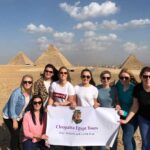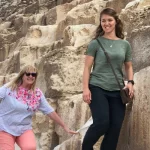Just west of the Delta region, Wadi Natrun was valued by the ancient Egyptians as a source of the salt deposit natron, a vital ingredient in the mummification process.
Later, during the Roman era, the valley’s isolation made it an ideal retreat for early Christians escaping Roman persecution.
Initially, these monks and hermits lived in caves, but over the years they built many monasteries, of which only four remain today.
The monasteries are easily reached from Cairo by bus, which terminates at the small village of Bir Hooker. All four are surrounded by high, mud-brick walls and resemble desert fortresses.
Within the fortified keep of Deir Anba Bishoi (the Monastery of St Bishoi), are a well, kitchens, church, and storerooms large enough to hold provisions for a year.
The church is believed to contain the body of St Bishoi, perfectly preserved in a sealed tube on the altar. He is also commemorated at the Monastery of the Syrians,
Deir as-Suriani, whose main church (dedicated to St Mary) is built over a cave where St Bishoi is believed to have received a vision of Christ. Bigger draws are the icons and wall paintings, some of which date back to the 8th century.
A little to the north is Deir an I-Ba ramus, where the bodies of two sons of the Roman emperor Valentinus are reputed to be buried in a crypt below one of its five churches.
20 km (12 miles) to the southeast is Deir Abu Makar, the most secluded of the monasteries: permission to visit must be arranged in advance.
Each monastery has a full complement of monks, who will show visitors around and may provide a simple meal, for which a small donation should be offered.
Book your Travel Package now to know more about Egypt history.





